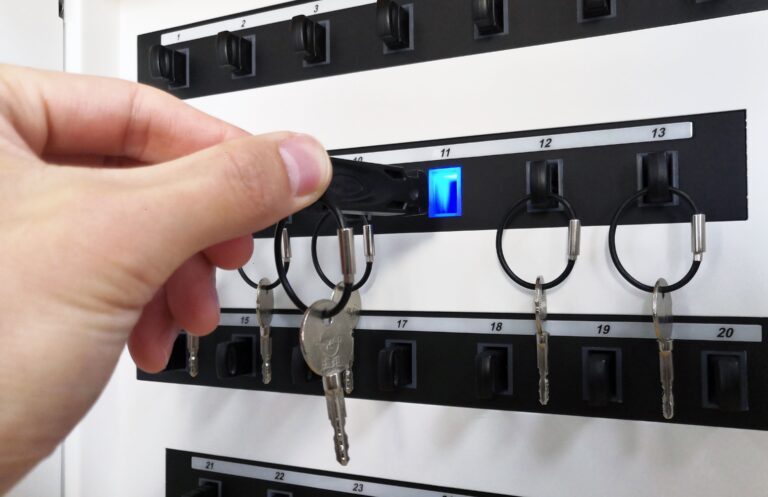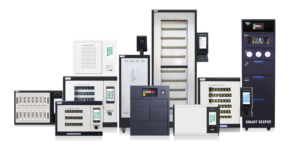
Safety and security on campus environments has become a significant concern for education officials. Today’s campus administrators are under heightened pressure to secure their facilities, and to provide a safe educational environment – and to do so in the midst of mounting budgetary constraints. Functional influences such as rising student enrollment, changes in the ways education is conducted and delivered, and the size and diversity of the educational facilities all contribute to make the task of securing a campus facility increasingly challenging. Keeping faculty, administrative staff, and the students their schools are entrusted to educate safe, is now a much more complex and time onsuming endeavor for campus administrators.
The primary focus of the teachers and administrators is to prepare students for tomorrow. The establishment of a safe environment in which the students can reach this goal is the sharedresponsibility of the School administrators and its teachers. The safety of students and the entire campus community is of the highest priority, and comprehensive security programs and procedures will help every member of the University community remain safe. The campus safety efforts touch all facets of students’ daily lives, whether in a residence hall, classroom, dining facility, office or out and about on campus.
Teachers and administrators receive keys tothe School. These recipients are entrusted with keys to the School to carry out the education objectivesof the School. Because possession of a school key gives authorized persons unfettered access to the School grounds, to the students, and to sensitive records, all parties in possession of a key must keepthe goals of confidentiality and safety in mind at all times.

A broad range of solutions are available to administrators searching for ways to meaningfully elevate their campus safety and security programs. However, the cornerstone of any truly effective campus safety and security program remains the physical key system. While some campuses use an automated key management system, others depend upon traditional key storage methods like hanging keys on pegboards or placing them in cabinets and drawers.
A well designed key system is perfect the day it is installed. But because day-to-day operation involves the continual interaction of locks, keys, and key holders which all change over time, the system can degrade quickly. Various disadvantages also come one after another:
l The daunting number of keys, university campuses may have thousands of keys
l It is difficult to track and distribute a large number of keys, fobs or access cards for vehicles, equipment, dormitories, classrooms, etc.
l Difficult to track high-value items such as mobile phones, tables, laptops, guns, evidence, etc.
l Time wasted manually tracking a large number of keys
l Downtime to find lost or misplaced keys
l Lack of responsibility for staff to look after shared facilities and equipment
l Security risk of taking the key outside
l Risk that the entire system cannot be re-encrypted if the master key is lost
Key Control is the best practice for campus security in addition to keyless access control system. Simply, ‘key control’ can be defined as clearly knowing at any time how many keys are available in the system, which keys are held by whom at what time, and what these keys have opened.

LANDWELL intelligent key control systems secure, manage and audit the use of every key. The system ensures that only authorized staff are allowed access to designated keys. The system provides a full audit trail of who took the key, when it was removed and when it was returned keeping your staff accountable at all times. With the Landwell key control system in place, your team will know where all keys are at all times, giving you the peace of mind that comes with knowing your assets, facilities, and vehicles are safe. LANDWELL system has the flexibility as a completely standalone plug-and-play key management system, offering touchscreen access to full audit and monitoring reports. Also, just as easily, the system can be networked to become part of your existing security solution.
² Only authorized persons are allowed to access school keys, and authorization is special to each key issued.
² There are different roles with different access levels, including custom roles.
² RFID-based, non-contact, maintenance-free
² Flexible key distribution and authorization, administrators can grant or cancel key authorization
² Key curfew policy, the key holder must request the key at the correct time, and return it on time, otherwise the school leader will be notified by an alarm email
² Multi-person rules, only if the identity characteristics of 2 or more people are successfully verified, can a specific key be removed
² Multi-factor authentication, which restricts unauthorized users from entering the facility by adding an additional layer of authentication to the key system
² WEB-based management system allows managers to view keys in real time, no more lost key overview
² Automatically record any key log for easy key audit and tracking
² Easily integrate with existing systems through an integrable API, and complete key business processes in existing systems
² Networked or stand-alone



